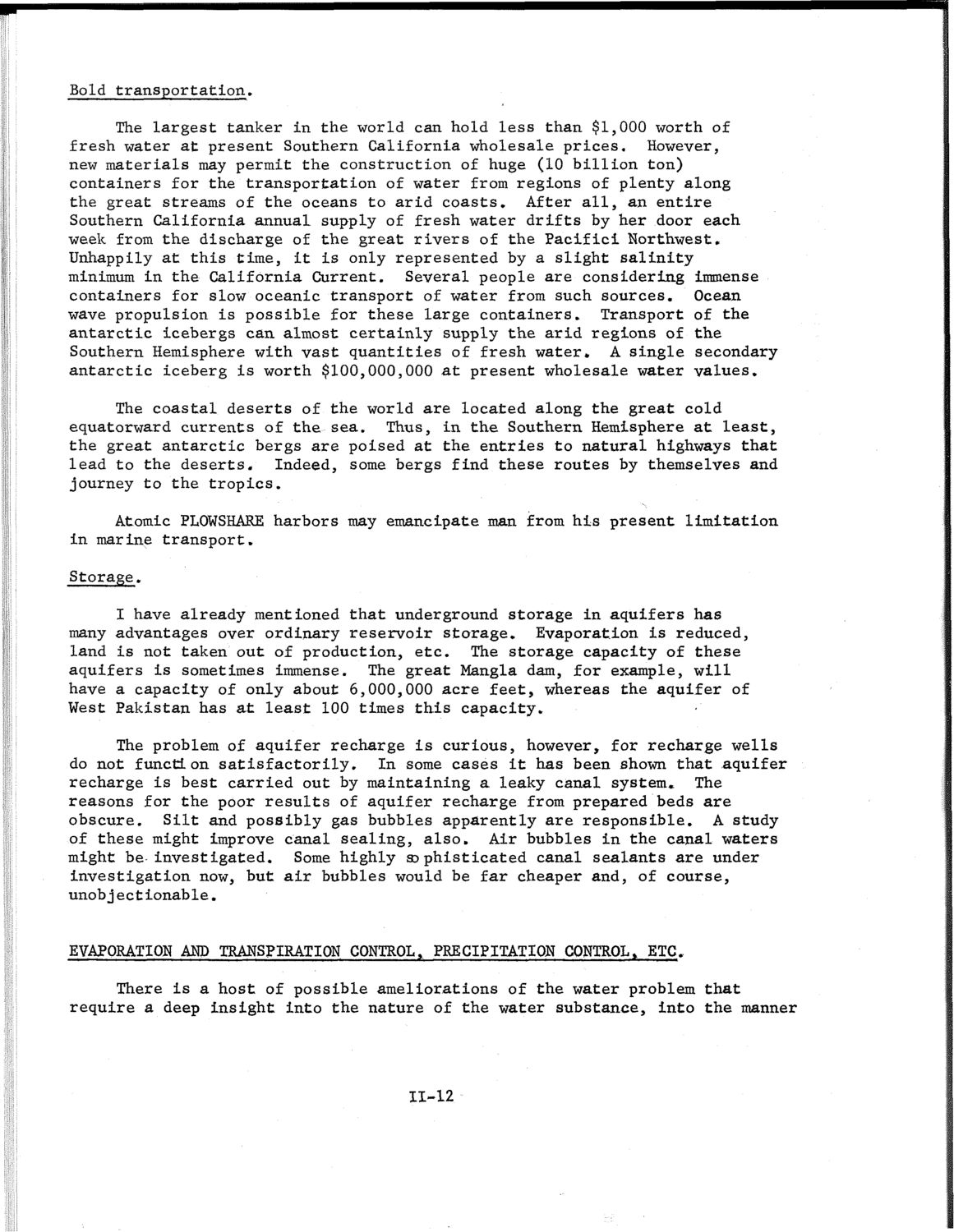| |
| |
Caption: SWE - Proceedings of the First International Conference of Women Engineers and Scientists
This is a reduced-resolution page image for fast online browsing.

EXTRACTED TEXT FROM PAGE:
Bold transportation. The largest tanker in the world can hold less than $1,000 worth of fresh water at present Southern California wholesale prices. However, new materials may permit the construction of huge (10 billion ton) containers for the transportation of water from regions of plenty along the great streams of the oceans to arid coasts. After all, an entire Southern California annual supply of fresh water drifts by her door each week from the discharge of the great rivers of the Pacifici Northwest. Unhappily at this time, it is only represented by a slight salinity minimum in the California Current. Several people are considering immense containers for slow oceanic transport of water from such sources. Ocean wave propulsion is possible for these large containers. Transport of the antarctic icebergs can almost certainly supply the arid regions of the Southern Hemisphere with vast quantities of fresh water, A single secondary antarctic iceberg is worth $100,000,000 at present wholesale water values. The coastal deserts of the world are located along the great cold equatorward currents of the sea. Thus, in the Southern Hemisphere at least, the great antarctic bergs are poised at the entries to natural highways that lead to the deserts. Indeed, some bergs find these routes by themselves and journey to the tropics. Atomic PLOWSHARE harbors may emancipate man from his present limitation in marine transport. Storage. I have already mentioned that underground storage in aquifers has many advantages over ordinary reservoir storage. Evaporation is reduced, land is not taken out of production, etc. The storage capacity of these aquifers is sometimes immense. The great Mangla dam, for example, will have a capacity of only about 6,000,000 acre feet, whereas the aquifer of West Pakistan has at least 100 times this capacity. The problem of aquifer recharge is curious, however, for recharge wells do not function satisfactorily. In some cases it has been shown that aquifer recharge is best carried out by maintaining a leaky canal system. The reasons for the poor results of aquifer recharge from prepared beds are obscure. Silt and possibly gas bubbles apparently are responsible. A study of these might improve canal sealing, also. Air bubbles in the canal waters might be investigated. Some highly sophisticated canal sealants are under investigation now, but air bubbles would be far cheaper and, of course, unobjectionable. EVAPORATION AND TRANSPIRATION CONTROL > PRECIPITATION CONTROL» ETC.. There is a host of possible ameliorations of the water problem that require a deep insight into the nature of the water substance, into the manner 11-12
| |